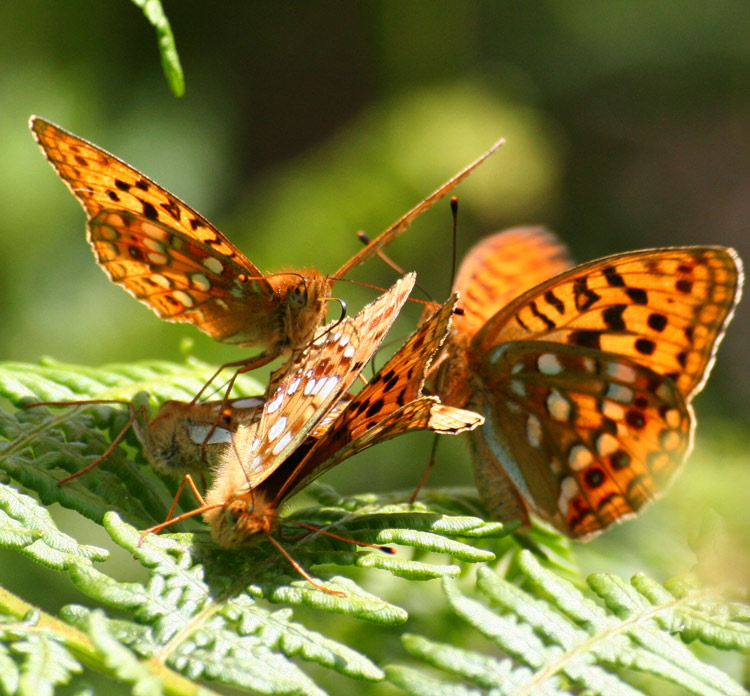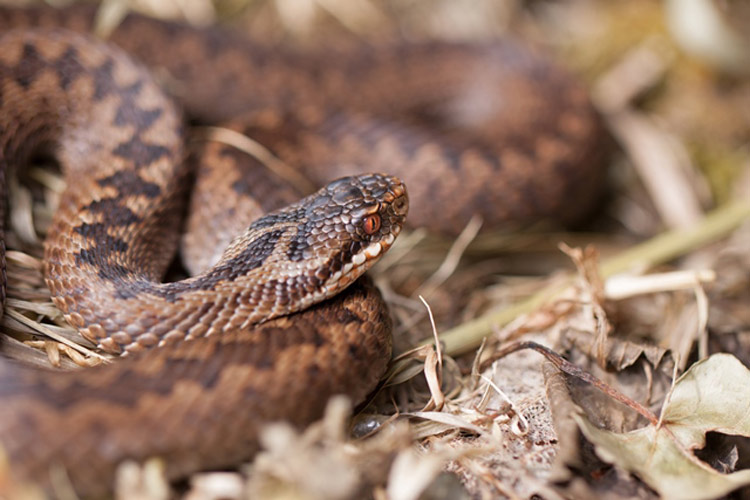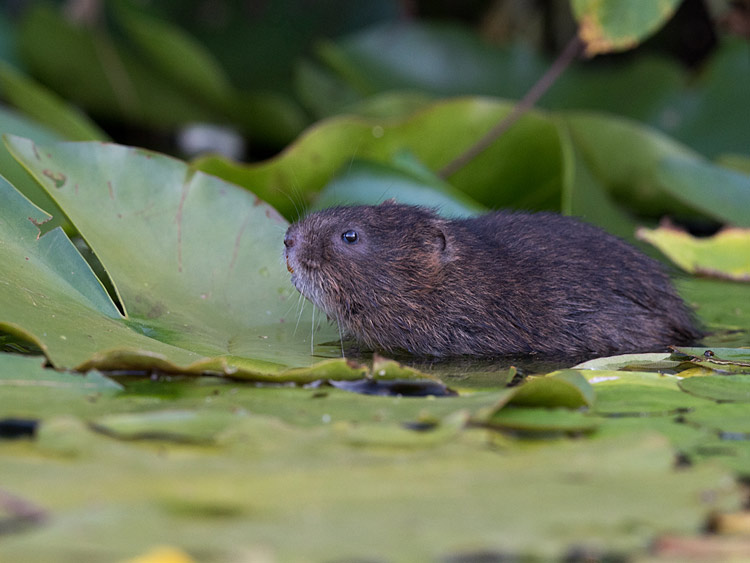Nature in Vale of Glamorgan
The Vale of Glamorgan area is mainly a rural county and consists of rolling lowlands, which are bounded in the south by the coast that includes a 19km stretch of designated Heritage Coastline. The region contains over 22 Sites of Special Scientific Interest (SSSIs). Although predominantly farmland, the Vale supports a very rich biodiversity and a diverse range of habitats and species, including some globally and nationally threatened species such as the shore dock, the high brown fritillary butterfly and the great crested newt.
Local Nature Partnership Community Grant
Further details here

About us
The Vale of Glamorgan Local Biodiversity Action plan was produced in 2002 in close consultation with the Vale LBAP partnership. Now re-invigorated as The Vale Nature Partnership following the implementation of the Wales Nature Recovery Action Plan, the partnership includes individuals, businesses, NGOs, community groups, recorders and public organisations.
Contact the Vale’s Local Nature Partnership Coordinator to find out more about the LNP and how you can help nature in the Vale.

Our Aims
The Vale of Glamorgan Nature Partnership exists to:
Halt the loss of biodiversity in the Vale of Glamorgan
Protect and restore existing habitats, as well as creating new habitats.
Educate and increase awareness on the importance of protecting our local biodiversity.
Provide volunteering opportunities for people to learn about local biodiversity and get involved in taking action for nature.
Support prospective and existing nature-based projects by offering resources and expertise.
Advise on appropriate action for conservation in the Vale of Glamorgan.
Facilitate partnership working to maximise our reach to inform and target action on nature’s recovery.

How are we going to achieve it
Developing a nature recovery network with partners, to engage the public, local community groups and organisations, as well as schools and businesses to take part in practical action for nature in their communities.
Working with partners to identify priority areas for actions within the Vale of Glamorgan that reflect the objectives of the Welsh Nature Recovery Action Plan and the opportunities identified within the Area Statement.
Supporting the development of projects that will deliver nature conservation aims as set out in our local action plans.
Become a member of the LNP
The Vale’s Local Nature Partnership runs projects and surveys that you can get involved in, get in touch to find out what is going on across the county.
Volunteer
Volunteering is a great way to help wildlife in the Vale and learn more about species conservation. There are lots of wildlife groups in The Vale, join the LNP to be kept up to date with volunteering opportunities!
Record
Recording sightings of wildlife is important as this information can help conservationists to assess changes in wildlife population trends and work to identify factors that may driving positive or negative changes within species populations. Wildlife data can be used to inform decision-makers on species recovery priorities as well as influence protected species designations under the Wildlife & Countryside Act 1981. Send your sightings of wildlife in The Vale to South East Wales Biodiversity Records Centre.
Biosecurity
Invasive species, harmful pests and pathogens are detrimental to our native wildlife. Find out more about biosecurity and the practical steps we can all take to reduce the risk of spreading invasive species, pathogens and pests when visiting the Welsh countryside.
Make Space for Nature
You can create a haven for wildlife in your own garden by providing vital habitats for our plants and wildlife. Learn more about ‘rewilding’ and how to create wildlife habitats here.
Places to see nature in the Vale of Glamorgan
Home to the most Southerly point in Wales with 53km of coastline and extensive countryside, there are countless places for you to discover and enjoy nature in The Vale. From country parks, Local Nature Reserves to nationally important habitats, there are always places open to the public.
A haven for local wildlife and a designated Local Nature Reserve. The two flooded quarries have become a Site of Special Scientific Interest (SSSI) to protect Wales’ only population of Starry Stonewort. Discover over 20ha of broad-leaved woodland, walk along the boardwalk through the thick reedbeds and explore the wildflower-rich grasslands.
The Country park offers 220 acres of woodlands to explore (Mill Wood, Cliff Wood and Knockmandown Wood) as well as meadows and ponds within a sheltered valley leading to a pebble beach and spectacular cliffs.
The Glamorgan Heritage Coast stretches for 14 miles, from Aberthaw to Porthcawl.
Dunraven Park in Southerndown is home to The Heritage Coast Centre, an information and education centre managed by the Rangers who protect and care for this stunning coastline. Dunraven Bay forms part of the Southerndown Coast SSSI which spans 5 km of the coastline; designated for its geology and botanical value, the cliff-top grassland is species-rich hosting a range of different plant communities.
The midpoint of The Glamorgan Heritage Coast, the lighthouse meadow is a SSSI and a great place for spotting wildlife from rare Tuberous Thistles, Common rockrose and Clustered bellflower, to graceful Fulmars flying overhead and playful porpoises in the turbulent water by the sand bank.
Lies on the most western limit of the Heritage Coast. The River Ogmore attracts a wealth of wildlife all year round from Salmon and Sea trout to Golden-eye ducks and Lapwings. Across the River Ogmore, are the Merthyr Mawr Sand dunes; a National Nature Reserve, home to over a third of all plant and insect life in Wales!
Nature reserves are managed by a range of conservation and wildlife organisations that work in the county, most have information on site that explains more about the habitat and wildlife you can see there. There are even opportunities to get involved with local conservation groups to help manage habitats for wildlife!
Aberthaw
A Local Nature Reserve, rich in wildlife; The Wildlife Trust for Wales have helped to record over 1000 different species here, 62 of which are of principle concern to the conservation to the biodiversity of Wales.
Birchgrove Woodland
A 4 acre reserve consisting of woodland and meadow, managed by the Birchgrove Wood Conservation Group
Cwm Talwg Woods
A Local Nature Reserve in Barry, 2.85 ha of mature deciduous woodland managed by the Cwm Talwg Woodlands Residents Group.
A community Nature reserve with over 300 species of flowers, grasses, insects and birds.
The Wildlife Trust of South and West Wales nature reserves in the Vale:
Cwm Colhuw, Lavernock Point, Coed Garnllwyd, Brynna Woods and Llanharan Marsh.
Woodland Trust Reserves in the Vale:
Cwm George and Casehill Woods, Monks Wood and Worney Wood
The Vale also has an extensive network of footpaths and countryside walks throughout the county. Get out and explore!
Highlights
- The Vale is now the last site in Wales for the High brown fritillary butterfly (Argynnis adippe, Britheg frown) with thanks to a lot of hard work from volunteers, the Glamorgan Heritage Coast Team and Butterfly Conservation and funding from the Aggregates Levy Fund, the population in the Vale is going from strength to strength. We are now looking to investigate how we can help the High Brown expand from its current site to others across the Vale.
- Habitat work across the Vale has been undertaken to support one of the largest populations of Great Crested Newts (Triturus cristatus, madfall ddŵr gribog) in South Wales: Pond creation in Cosmeston, Dyffryn Gardens Newt Complex, and pond enhancement work across the Vale and the Safer Drains Project.
- One of Wales’ most endangered species makes a comeback after more than 100 Water Voles (Arvicola terrestris, llygoden bengron y dŵr) were released into Cosmeston Lakes Country Park in 2017. The park is designated a Site of Special Scientific Interest (SSSI) and its lakes, ditches, reedbeds and other plant life make for the perfect habitat for water vole populations to thrive.
- Cosmeston Lakes is designated as a SSSI to protect a rare plant called Starry stonewort (Nitellopsis obtuse). As the only site in Wales with this plant, the lakes offer an ideal habitat as the starry stonewort prefers lakes between 1 and 6m deep at low altitudes in calcareous waters usually near to the coast.
- After several years of monitoring and habitat work, the Chough (Pyrrhocorax pyrrhocorax, brân goesgoch) returns to the Vale for the first time in over a hundred years! Spot these impressive birds flying along Glamorgan’s Heritage Coast!
- In the UK, the True service tree (Sorbus domestica, Cerddinen Morgannwg) is an extremely rare and spontaneously occurring tree; it can be found growing on steep limestone cliffs in two sites in the Vale (Fontygary and Porthkerry). In Porthkerry, the trees are threatened by Holm oak, an introduced evergreen species that is out-competing the True service tree. Removal of Holm oak is underway to protect this nationally important population.
- In Wales, surviving populations of Tuberous thistle (Cirsium tuberosum, Ysgallen glorogcan) be exclusively found in the species-rich ancient cliff-top chalk grassland overlying Jurassic limestone along 5km of the Vale’s coastline. Nash Point is designated as a SSSI to protect this rare plant since its discovery there in 1977.
- Shepherds Needle (Scandix pecten-veneris, Nodwydd y bugail); a tall member of the carrot family has finely divided leaves and small white flowers in umbels. Its name comes from seeds which have a long thin projection, the ‘needle’, which eventually throws the seed up to a metre away. Like many arable ‘weeds’ it has declined with Glamorgan now one of its two stronghold’s in Wales.
Key contact
Emily Shaw -Local Nature Partnership Co-ordinator
The Vale of Glamorgan Council
Dock Office, Subway Road
Barry Docks, Barry, CF63 4RT
Email: [email protected]
Vale Nature Partnership website
Council website: click here















